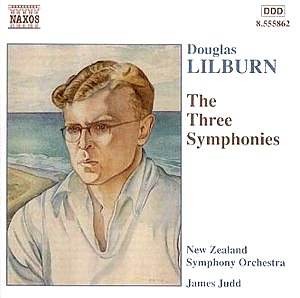Taking account of the Continuum (mostly 1960s reissues
of LP recordings) and Kiwi-Pacific (new recordings) versions this is
the third CD of Lilburn's trilogy of symphonies and all three have used
New Zealand Symphony Orchestra. I do not see you going wrong with any
of the three versions.
Copland, Roy Harris, Nielsen and Sibelius are Lilburn's
stylistic compass points. In fact the ice cold draughts of Sibelius's
Sixth and (up to a point) Third Symphonies are clearly role models for
the first two symphonies. High and shining strings often either singing
long-breathed melodies or snapping out tight little rhythmic figures
are the hallmarks of these two works. Sibelius's Seventh is alluded
to at 9.02 in the first movement of the First Symphony. Copland's outdoor
manner of the 1940s is also in evidence. There has been talk of the
influence of Lilburn's teacher, Ralph Vaughan Wiliams but frankly I
don't hear it.
The Third Symphony, written a decade after the Second,
is a single quarter hour movement. It is a rather taciturn piece which
buries the Sibelian gene pretty deeply. Going by this Symphony Lilburn
found the need to change gear in the 1960s (mind you, who knows what
a Sibelius symphony written in 1954 might have sounded like!) . The
Third protests, rebels, scowls and meanders gloomily. It does so with
some rasping dissonance without the wilder avant-garde extremes. It
seems a work of disillusion and ends in mid-step. I have known the symphony
now for upwards of twenty years and it strikes me as an unsatisfactory
work.
I noted that Naxos provide translations of the notes
into the predictable German and French but also the less predictable
Spanish; a reflection perhaps of the rising significance of the Spanish
language - for example in the USA.
I urge you to seek out this bargain price disc especially
if you have a taste for Sibelius and Copland. Those who take to this
music should next urgently seek out Randall Thompson's three symphonies
for they have a similar ardour and life-force if less of the Sibelian
manner..
Rob Barnett
see also review
by Jonathan Woolf


